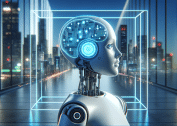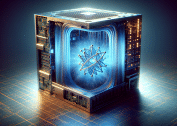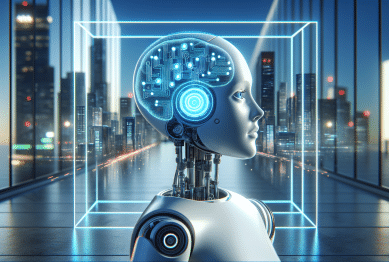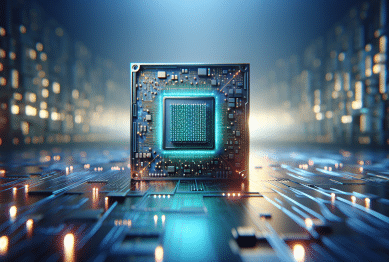Artificial intelligence image generators are reshaping what’s possible with pictures, art, and even journalism. Learn how AI-driven images work, where these tools are used, and what ethical questions surround this technology as it blends art, science, and digital reality together.
The Rise of AI Generated Images
AI generated images have rapidly gained attention in recent years for delivering hyper-realistic artwork, unprecedented photo edits, and visual content at unimaginable speed. These images are the product of machine learning algorithms trained on massive libraries of visual data. From photo editing software to entirely new types of media, the influence of artificial intelligence on digital visuals is rapidly growing. Many people encounter AI-created art in social feeds or news stories without even realizing it, demonstrating just how sophisticated these solutions have become. This rise is not just about novelty, but a fundamental shift in how images are made, shared, and trusted in digital spaces.
Behind every AI generated image is a complex web of neural networks, commonly known as Generative Adversarial Networks (GANs), which mimic the way humans learn visual cues. While earlier digital art relied on manual manipulation by human designers, today’s AI tools can generate lifelike photos of fictional people, landscapes, or abstract art in seconds. Advances in hardware and access to open-source models now allow individuals and organizations of any size to harness this technology, democratizing creative power in the digital age. As a result, industries ranging from advertising to entertainment and even scientific research are finding new uses for this rapidly advancing capability.
The speed and reach of AI image generation have led to entirely new business models as well. Some companies provide access to powerful algorithms for a fee, while others build tools that let users create personalized content on demand. These innovations empower creative projects that might have been impossible or cost-prohibitive with traditional photographic or artistic methods. However, with these technological leaps come significant challenges, including questions about copyright, ownership, and potential misuse. The next sections dive deeper into just how these systems work and what separates AI-created images from traditional forms of digital media.
How AI Driven Image Generators Work
Most artificial intelligence image generators rely on deep learning, a branch of machine learning that imitates the visual cortex in the human brain. By training on millions of real-world and synthetic photos, these systems learn to produce new images that mimic specific styles or subjects. This process is often powered by GANs, consisting of two neural networks that compete with each other: one creates images, and the other critiques their realism. Through countless cycles, the images become increasingly convincing to both the algorithm and the human eye.
An important technique in generating high-quality images is transfer learning, where a model trained on one task is repurposed for another, like converting sketches into colored art, or turning daylight scenes into night views. These models can accept textual prompts that describe a scene, enabling users to create images even without specific artistic skills. Accessibility is growing due to user-friendly interfaces and cloud-based platforms, which remove the technical barriers that once limited advanced image generation to machine learning experts. This makes creativity more inclusive and opens up possibilities for a wider range of applications, from self-expression to scientific communication.
Despite these advances, the process is not foolproof. Sometimes AI generated images display telltale errors—strange hands, warped backgrounds, or odd lighting—reminding users that the technology is still evolving. On the other hand, improvements arrive quickly as datasets expand and algorithms improve. The line between genuine and computer-generated visuals is continually blurring, and this evolving space keeps researchers, artists, and ethicists busy as they work to balance innovation with accuracy and responsibility. Understanding these mechanics is crucial for anyone exploring the power and pitfalls of AI-generated art in the digital world.
Popular Uses of AI Generated Images
One of the most exciting applications for AI generated images is in the creative arts, where artists and designers use these tools to brainstorm new visual concepts or push the boundaries of digital creativity. AI can assist with everything from illustration and animation to fashion design and product mock-ups. In journalism and advertising, artificial intelligence helps generate stock photos, visual explainers, and engaging marketing content faster than ever before. As these experiences become more immersive and interactive, the demand for AI-driven images is only expected to grow.
Healthcare has also started to benefit. Medical researchers use AI to synthesize training data for advanced diagnostics, enhancing machine learning tools in radiology and pathology without exposing real patient records. Similarly, urban planners and architects explore how proposed buildings or city parks might look under different environmental conditions by generating visualizations with AI. These applications improve decision-making while optimizing design processes, leading to better outcomes for communities and industries alike.
The entertainment industry is rapidly adopting AI generated images for movie pre-visualization, special effects, and video game worlds that blend realism with imagination. AI-driven art competitions now showcase works created entirely by algorithms, challenging long-held ideas about artistic authorship. Even social media users turn to AI-powered platforms for photo enhancements, cartoon avatars, or unique digital portraits. As more people engage with these tools, the blend of creativity, efficiency, and automation is changing not just individual workflows, but also larger creative cultures around the world.
The Ethical and Social Implications of AI Imagery
The growing presence of AI generated images brings important ethical considerations. One key concern is misinformation: hyper-real AI images can create fake news, staged events, or manipulated evidence that deceives the public. This puts pressure on newsrooms, regulators, and tech platforms to develop ways to distinguish genuine photos from fabrications. Tools such as digital watermarking and content verification software are being developed to help flag AI imagery, but the effectiveness and adoption rates of these solutions vary among industries.
Copyright and consent also come into play. When an AI system learns from online image data, it may inadvertently use copyrighted works or personal photos in its training process, raising legal and moral questions about ownership. Recent lawsuits have addressed these gray areas, but the rules are still evolving. For creators and users, it’s important to understand licensing terms and permissions for both input data and generated media, since violations may carry significant legal risks. Digital artists are now calling for transparent attribution and crediting mechanisms that properly recognize original creators, even in algorithm-driven workflows.
On a social level, AI-generated images challenge perceptions of authenticity and trust. As technology becomes better at faking reality, it complicates questions around privacy, identity, and cultural representation. For example, generative models that produce faces can perpetuate biases found in their training data, impacting how groups or individuals are visually depicted online. Organizations and advocacy groups are calling for greater oversight and ethical guidelines to ensure AI-driven imagery serves the public good, rather than undermining it. This conversation is likely to grow even more urgent as technology continues to advance.
How to Spot an AI Generated Image
Spotting an AI generated image is becoming a valuable digital literacy skill. Some signs include irregularities or unrealistic details like unnaturally smooth skin, distorted hands or backgrounds, and mismatched lighting. Sometimes, objects or people in the image lack the fine details or imperfections usually present in natural photographs. These subtle cues are often missed at a glance, particularly on small screens or in fast-scrolling feeds.
Tools and browser extensions have emerged to help users identify AI-generated images. Some platforms use metadata and content analysis to flag suspicious media, providing pop-up warnings or links to fact-checking resources. Peer-reviewed research suggests that image forensics—analyzing pixel inconsistencies, compression artifacts, and watermark patterns—offers useful clues as well. Staying informed about these diagnostic tools is crucial for anyone wishing to responsibly share or consume imagery online.
Finally, education plays a key role. Critical thinking, media literacy programs, and public awareness campaigns can all help individuals and organizations spot fakes more reliably. Recognizing the difference between authentic and AI-generated content protects against misinformation and fraud, and enables deeper engagement with the benefits of digital creativity. As this technology grows smarter, so must the people interacting with it.
The Future of AI and Visual Communication
The future possibilities for AI generated images seem nearly endless. Artists are already collaborating with algorithms to explore visual frontiers well beyond what manual techniques allow. Commercial uses continue to expand, offering new forms of engagement, advertising, and storytelling to businesses of all sizes. Further developments in hardware, cloud computing, and open-source software will drive innovation and lower barriers for individuals and organizations alike.
Policy makers and research communities are increasingly focused on building responsible frameworks as the line between digital fiction and fact blurs. Open dialogue among technologists, artists, regulators, and end users is crucial for establishing ethical guidelines, fair compensation, and adequate safeguards. There is growing support for transparency measures like AI-generated labels and metadata to ensure viewers know the source of the image they’re seeing. Such steps may help address concerns about authenticity and consent while enabling new forms of creative expression.
Looking ahead, AI will almost certainly continue to shape how society creates, interprets, and interacts with images. Innovations in digital art, medicine, communication, and education will push both technical and cultural boundaries. The key will be balancing the benefits of machine creativity with the enduring value of human judgment and ethical consideration—so that as the visual world becomes more artificial, it also becomes more meaningful, accessible, and trustworthy.
References
1. National Institute of Standards and Technology. (n.d.). AI Deepfakes: A New Reality? Retrieved from https://www.nist.gov/itl/ai-deepfakes-new-reality
2. UNESCO. (n.d.). The Ethics of Artificial Intelligence. Retrieved from https://en.unesco.org/artificial-intelligence/ethics
3. ACM Digital Library. (n.d.). Automatic Generation of Art by AI. Retrieved from https://dl.acm.org/doi/10.1145/3422622
4. Stanford University. (n.d.). AI in Visual Arts. Retrieved from https://hai.stanford.edu/news/ai-and-visual-arts
5. Pew Research Center. (n.d.). Artificial Intelligence and the Future of Humans. Retrieved from https://www.pewresearch.org/internet/2021/06/21/artificial-intelligence-and-the-future-of-humans/
6. World Economic Forum. (n.d.). How AI is Changing Creativity. Retrieved from https://www.weforum.org/agenda/2021/05/how-ai-is-changing-creativity/









